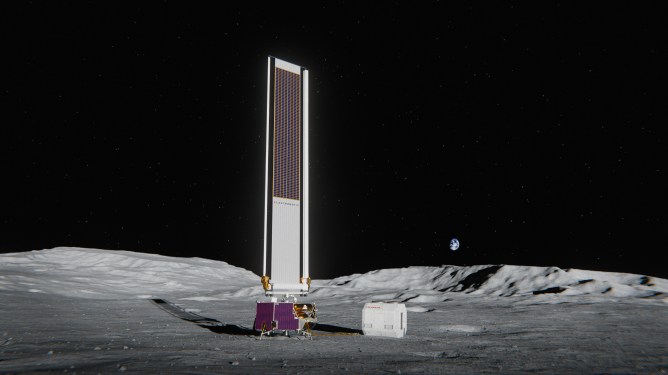Automotive giant Honda and lunar startup Astrobotic are collaborating to explore how a regenerative fuel cell system could provide power during the long nights on the Moon. The companies have partnered to study the integration of Honda’s regenerative fuel cell into Astrobotic’s LunaGrid, a scalable power service built around solar arrays. They will conduct illumination studies at potential lunar south pole landing sites and evaluate system scalability along with hardware and software integration.
A major challenge for lunar exploration is surviving the two-week-long lunar night, when temperatures can drop to as low as negative 424 degrees Fahrenheit in some regions and solar panels are unable to generate power. Honda’s regenerative fuel cell addresses this problem by storing solar power as hydrogen during the lunar day and converting it back into electricity at night, producing water as its only byproduct. This water is then recycled through a high-pressure electrolysis system to create more hydrogen, forming what Honda calls a closed-loop energy cycle.
Astrobotic’s Vertical Solar Array Technology is designed to track the sun for maximum energy capture and is planned to have a capacity of up to 10 kilowatts. The company is also developing an XL version that would generate five times more power. Together, the solar arrays would collect sunlight during the day to power the water electrolysis system, while the regenerative fuel cell would convert the stored hydrogen back into electricity throughout the night. The ultimate goal is to achieve continuous and reliable power on the lunar surface.
Founded in 2007, Pittsburgh-based Astrobotic is best known for its Peregrine lunar lander, which launched earlier this year but did not complete its mission. The company is also developing power and mobility systems as part of its goal of building a lunar economy. For Honda, this agreement marks a significant step into the space sector. The automaker has long invested in fuel cell research and development, but this is its first public agreement to deploy that technology on the Moon.
This collaboration aligns with Japan’s broader space ambitions. The country is a founding member of the Artemis Accords, a framework for geopolitical collaboration in lunar exploration, and Japanese astronauts routinely conduct research on the International Space Station. The lunar south pole is central to NASA’s Artemis program partly due to the region’s near-continuous exposure to sunlight and the potential vast stores of water ice there. Power systems like LunaGrid, paired with Honda’s regenerative fuel cell, could enable more ambitious future missions and eventually a sustained human presence on the Moon.

